Back Issue | Trek Powerfly+ FS9 Review
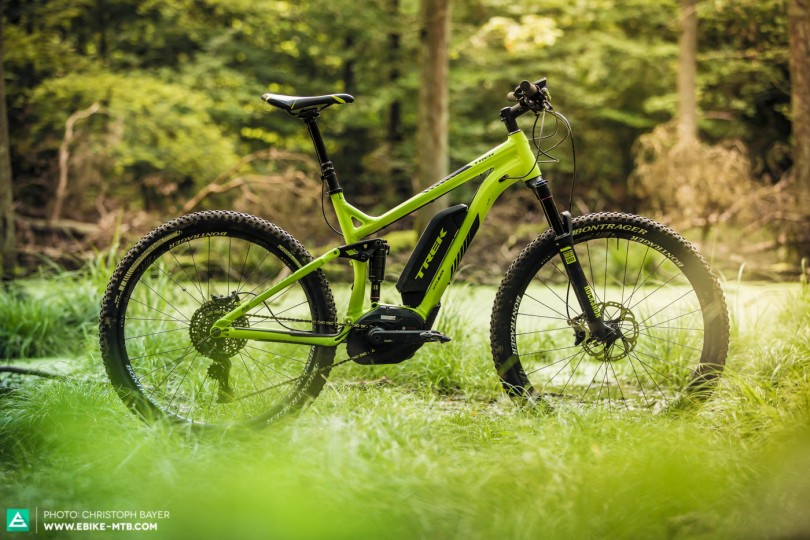
The first time we set eyes on the Trek Powerfly+ FS9, we were quite surprised — and in a positive way! The e-mountainbike screamed for attention with its neon-green finish, and the geometry and spec looked coherent. The Powerfly FS was based on the super- successful Fuel EX model range (conventional MTB).
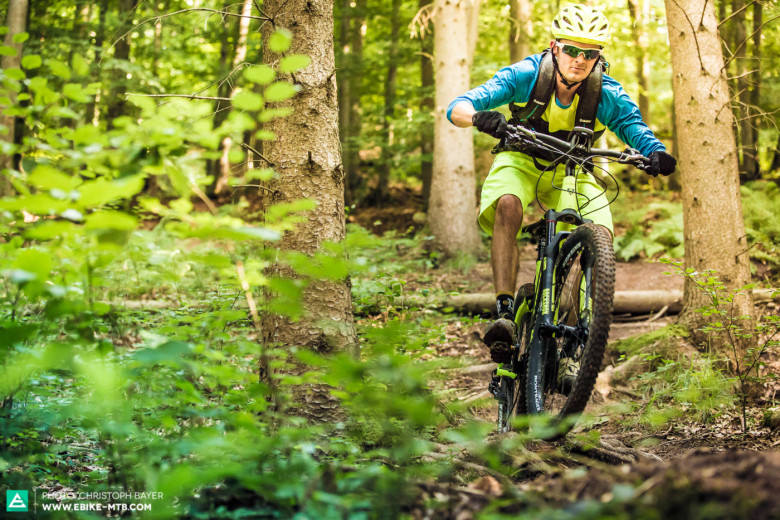
120 mm travel front and rear, 27.5″ wheels, Bosch Performance Motor, and an overall weight under 20 kg (without pedals) — the benchmark parameters of the green zipper. And the pricing is attractive: € 4,499 for the top FS9 model, while the entry-level full suss Trek starts at € 3,299.
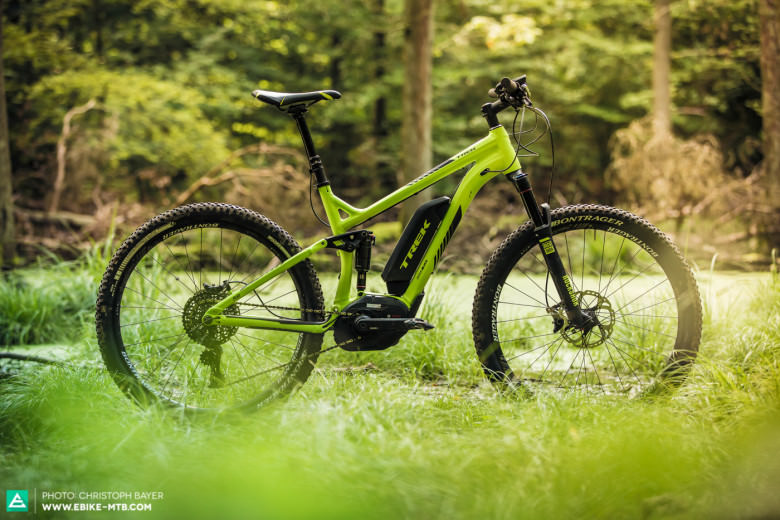
A top-end spec should leave no room for upgrades, and this is exactly the case for the Trek. The RockShox Reverb Stealth dropper post is fitted as standard, just like the grippy Bontrager tyres, the solid cockpit (720 mm wide bars, 90 mm long stem), RockShox Revelation RCT3 Solo Air fork, Monarch DebonAir RL shock, Shimano XT brakes, and a 1×11 SRAM X1 drivetrain. In order to make the bike stand out and look sportier, the Bosch Performance Line motor has been fitted with a new housing. The internally routed cables finish off the clean look.
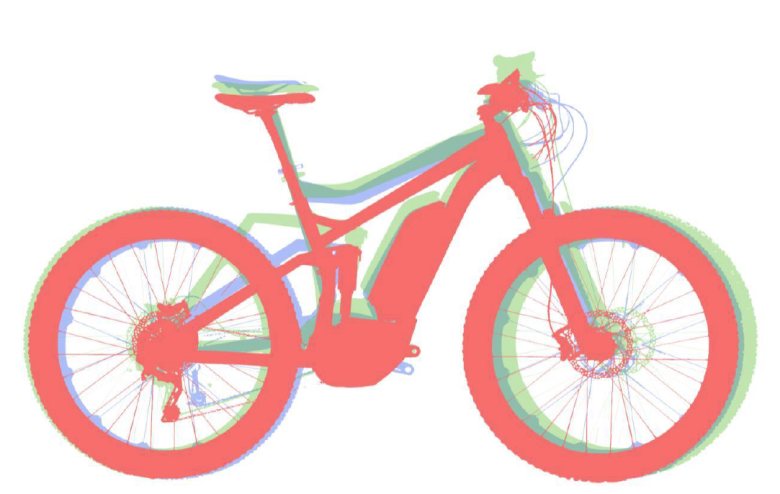
But a good spec and chic look are only half the battle. What about frame features? In order to integrate the motor well in the frame, the chainstays are positioned extremely low so that the chain runs at approximately the height of the main pivot point in the linkage- activated, single-pivot rear suspension system. This allows the ABP (Active Braking Pivot) system to achieve its full maximum effect, keeping the rear suspension completely active during braking and thus generating more traction and security. The rubber protector on the chainstay protects the paint and prevents noise developed from the chain hitting the tube. The big problems of the Bosch motors in off-road use are the large dimensions of the motor itself and the extremely small chainring. Trek has elegantly solved both issues with its low-mounted chainstays and a deflector guide in the motor cover — chain rub or hitting is no longer a problem.
An ingenious (and very helpful!) feature is the in-house developed motor protection plate, which offers both slits for water to escape and an integrated bottle opener. The Trek guys have it worked out!
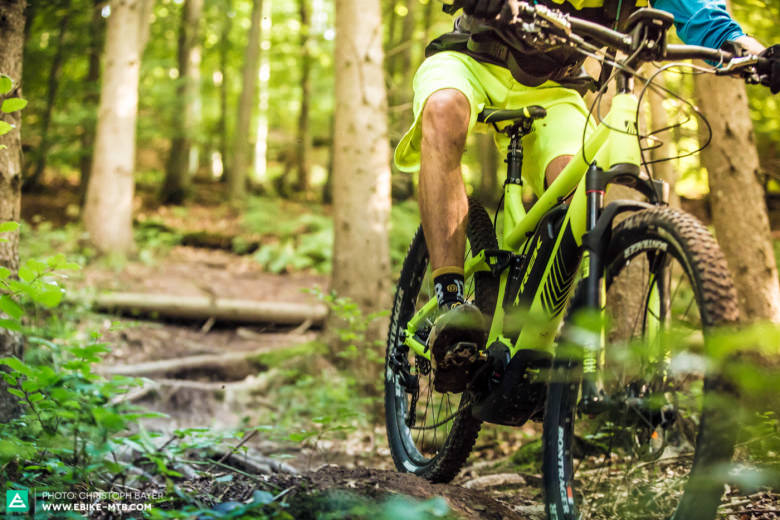
So much for technical details. What it really comes down to is the riding performance off- road, and this was impeccable from the first meter. The central and well-balanced position on the bike creates an instant feeling of ease on the trail. Cornering feels poised and confident, with the front wheel following every steering input. The low standover height provides not only security, but also allows for freedom of movement on the bike. Even with just 120mm of travel, the bike feels very planted on the ground. Whilst the RockShox Monarch DebonAir shock delivered a perfect score, we would have preferred a fork with better impact-absorbing qualities — a reduced-travel RockShox Pike would in our opinion fit the bike perfectly. The suspension is plush and yet well-defined, and the Powerfly FS+ delivered no nasty surprises, making it equally suitable for beginners and skilled riders.
The standard spec RockShox Reverb seatpost increases the rider’s fun noticeably: pedalling on climbs is comfortable and ergonomic, but when hitting the downhills a quick press on the bar-mounted remote hydraulically lowers the saddle for maximum manoeuvrability and confidence on the bike. The Shimano XT brakes and SRAM X01 drivetrain do their respective jobs reliably. Only the Bontrager front wheel had some issues with lateral play in the hub.
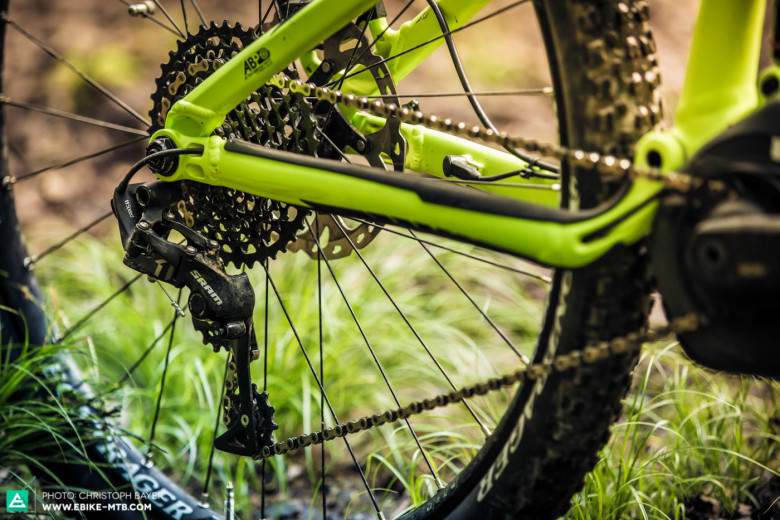
Wide Range –
With a 10–42t cassette on the SRAM X1 drivetrain, even steep climbs can be tackled with ease. It allows you to pedal with a high cadence and thus get the optimal drive support from the Bosch motor.
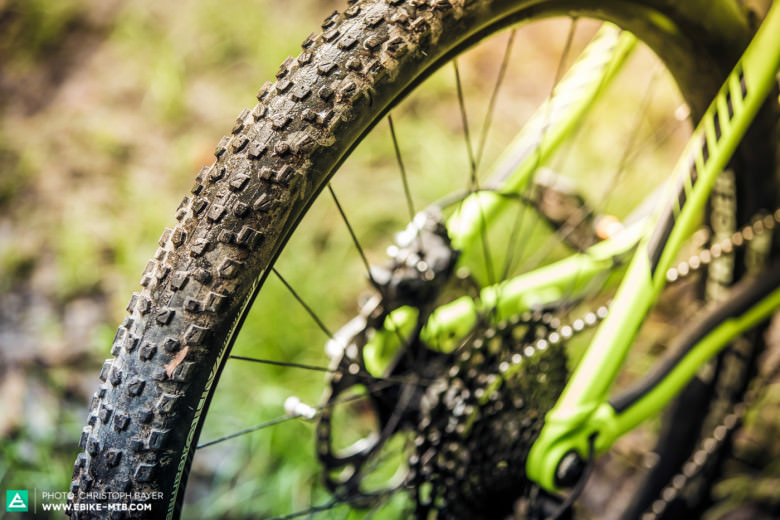
Grippy –
The Bontrager XR3 Team tyres impressed the testers — they offer excellent grip, especially on dry trails. In muddy terrain, their low profile loses some traction.
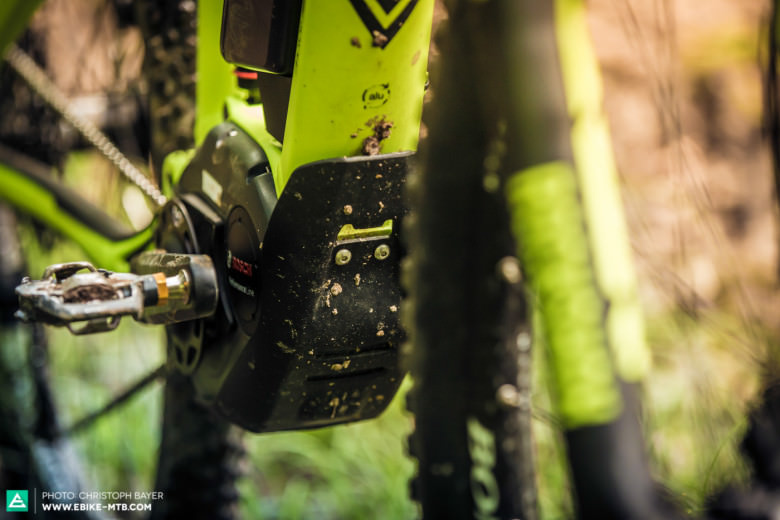
Well conceived –
Trek’s in-house-engineered skid plate protects the motor from damage and includes a bottle opener, which might save the rider from a worst-case dehydration scenario.
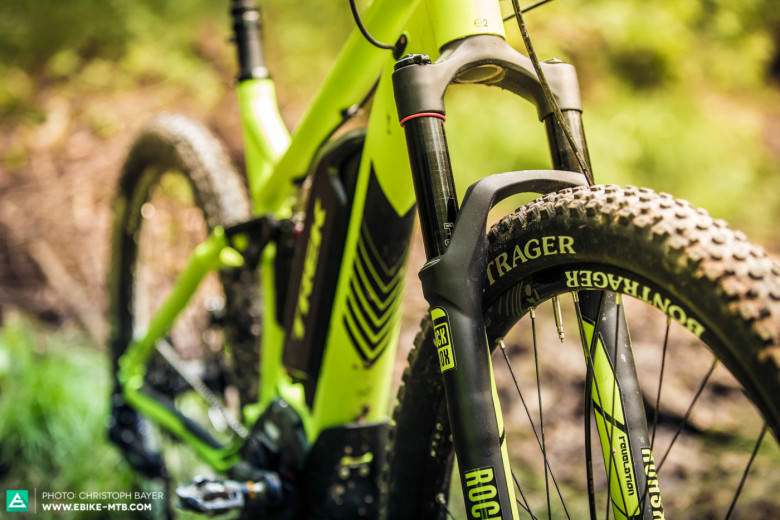
Overwhelmed –
The RockShox Revelation suspension fork fitted does offer good function, but reaches its limits much sooner on rough terrain than the potent rear suspension.
Conclusion:
all in all, Trek has landed a real winner with the Powerfly FS+.
The striking and stylish looks, a well-chosen spec, and a great-performing overall package leave no corners unturned. On top of all that, the price is hot!
Price: € 4.599
Weight: 20 kg
Specifications
- Fork: Rockshox Revelation RT3 120mm
- Rear shock: Rockshox Monarch Debon Air RL
- Motor: Bosch Performance Cruise 250
- Battery: Bosch Power Pack 400Wh
- Drivetrain: SRAM X1
- Brakes: Shimano XT
- Handlebars: Bontrager Low Raser 720mm
- Stem: Bontrager Race Lite 90mm
- Tires: Bontrager XR3 Team 2,35
- Wheels: Naben: SRAM MTH 746 Felgen: Bontrager Duster
- Seatpost: RockShox Reverb
Geometry
Size: 17,5″ | Top tube horizontal:580mm | Seat tube angle: 71°| Cahinstay length:4470mm | Head tube angle: 68° | Wheel base: 1126mm Reach: 422mm | Stack:595mm
Words: Robin Schmitt Photos: Christoph Bayer
Did you enjoy this article? If so, we would be stoked if you decide to support us with a monthly contribution. By becoming a supporter of E-MOUNTAINBIKE, you will help secure a sustainable future for high-quality cycling journalism. Click here to learn more.








